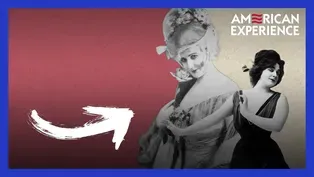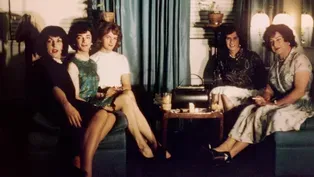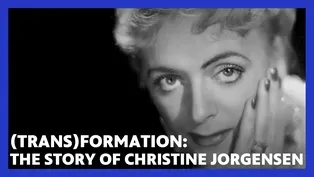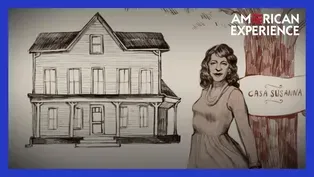
Chapter 1 | Casa Susanna
Clip: Season 35 Episode 6 | 8m 52sVideo has Closed Captions
Watch a preview of Casa Susanna.
Casa Susanna was a refuge for transgender women and cross-dressing men in the 1950s-60s.
Problems with Closed Captions? Closed Captioning Feedback
Problems with Closed Captions? Closed Captioning Feedback
Corporate sponsorship for American Experience is provided by Liberty Mutual Insurance and Carlisle Companies. Major funding by the Alfred P. Sloan Foundation.

Chapter 1 | Casa Susanna
Clip: Season 35 Episode 6 | 8m 52sVideo has Closed Captions
Casa Susanna was a refuge for transgender women and cross-dressing men in the 1950s-60s.
Problems with Closed Captions? Closed Captioning Feedback
How to Watch American Experience
American Experience is available to stream on pbs.org and the free PBS App, available on iPhone, Apple TV, Android TV, Android smartphones, Amazon Fire TV, Amazon Fire Tablet, Roku, Samsung Smart TV, and Vizio.
Buy Now
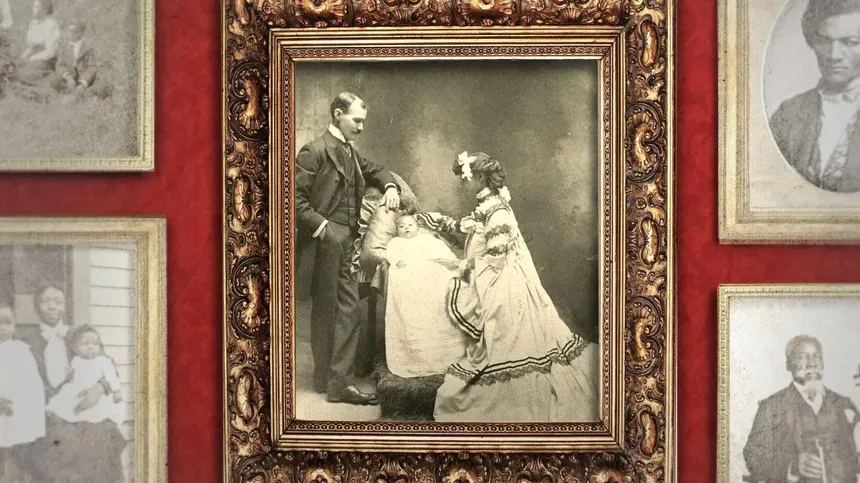
When is a photo an act of resistance?
For families that just decades earlier were torn apart by chattel slavery, being photographed together was proof of their resilience.Providing Support for PBS.org
Learn Moreabout PBS online sponsorship♪ ♪ Yes, that's the house... when I went there.
And there was a swing hanging in the end of the veranda.
And this was the old barn, where the theatricals took place.
Halloween 1962, I was being a little swan in "Swan Lake."
Susanna was doing erotic dancing.
South American dancing.
And three of my friends were being the Andrews Sisters.
It looks as good as it did then.
(insects chirping) We all used to have our meals there, and people used to sit out the front-- on the veranda, or on the lawn.
People used to do gardening work.
They just loved being here, because they had total freedom.
Total... chance to be themselves for a change.
The weekend of Halloween 1962 was when Virginia Prince formed a national sorority of cross-dressers called F.P.E., which is for Full Personality Expression.
And... it was a very interesting weekend, to say the very least, though.
There were psychiatrists from the Kinsey Institute.
There were people from all over, there were over a hundred people there that weekend.
But it's, it's much the same.
(ship horn blares) Visiting Casa Susanna was almost a necessity for me.
I had to leave my family in Australia and come to America 'cause I needed to know more about myself, I needed to know what it would be like to live as a woman for an extended period.
And, in the back of my mind, I thought, if I go to Casa Susanna and I find that I'm more woman inside than I am man, that might be the point where my new life starts.
I think there are very few people like me because I was a white child with a single sibling, living on a coral island in the middle of the Pacific.
I can remember as far back as about five, my sister dressing me in one of her old dresses.
The fact that I absolutely adored the feeling and wanted it to go on, wished it would happen every day, wished that when that my father came home from the sea, I could say, "You've got two daughters now."
One doesn't know where these thoughts start.
It wasn't until lot of years later that I had that experience of joy, of sheer joy at being able to walk among people and talk to them without hesitation, to know that they understood the person I was, no matter what I looked like inside, I was a real woman and I wanted them to know it and they did know it.
♪ ♪ DIANA: Between my third grade and fourth grade, I would go to sleep at night praying that I would wake up as a girl.
And I would pray hard, you know.
It was a secret that I had, and mostly, because I was very active, and I was very social, and very out there, it didn't have much impact in terms of what it appeared.
But I knew that it was-- there was something down inside of me that was not right, that was, that was not who I was.
And there was, and there was no way to make it right.
I don't...
I think it's very hard to kind of get... have an appreciation for the difference... for me, isolated in, in Iowa, where, literally, you cannot talk to anyone about this at all.
You have to kind of understand that my mother was very seriously Lutheran, which is a very literal Christianity.
The Bible, the earth was created in six days, so when I began to have feelings about wishing that I were a girl, there was just no way that could possibly be okay.
And I kept thinking I would grow out of it.
And some... you know, there was a kind of almost optimism about it, in the face of pretty dark frustration.
That, okay, you'll get through this, just, just go to school, do your school, do your college, get married, and this will go away.
And it never did go away.
That thing was always there, and there was no way to express it.
There was nobody, there was no information, there was no library I could go to, there was just no place.
And that was the real darkness, that there was kind of nothing to help me think about it, even, you know.
What must this be?
What is this that could be going on with me that makes me have these feelings?
(newsreel music playing) NEWSREEL NARRATOR: Christine Jorgensen, who used to answer to George, creates quite a stir as she returns home to New York from Copenhagen.
Christine hit the headlines following the series of operations in Denmark that transformed her from a boy into a girl.
All of which made her a celebrity to meet and talk to when she stepped off the plane at international airport.
Gentlemen, please give her a chance to talk!
(overlapping chatter, reporters clamoring) I'm very impressed by everyone coming.
REPORTER: Christine, are you happy to be home?
Yes, of course.
What American wouldn't be?
Have you been offered a movie contract?
Yes, but I haven't accepted it.
Do you have any plans regarding the theater?
No, I don't think so.
Are you going to go on with your photography?
I hope so, yes.
I see.
I'm very happy to be back, and I don't have any plans at the moment, and I thank you all for coming, but I think it's too much.
Fine, thank you very much.
♪ ♪ DIANA: I was a paper boy, and I carried the paper.
And when I went down to pick up the papers, there was Christine Jorgensen on the front page.
And I think I sat down and I read the story.
I read it avidly.
And that was it.
There was nobody I could talk to about it.
If I were to talk about it, "Oh, this is horrible," that would be that, you know, this horrible, sinful thing that this person did to themselves and they will be damned to hell and all my friends would just make fun of it.
Talking to my parents would be a disaster.
♪ ♪ It was illegal in this country.
So almost everybody in the country thought it was wrong.
All the doctors thought it was wrong, it was all wrong.
It was just barely beginning to be contemplated as something that was plausible, might be conceivable.
Clip: S35 Ep6 | 4m 44s | What exactly is Drag? How did it find its way into the limelight? (4m 44s)
Video has Closed Captions
Preview: S35 Ep6 | 2m 10s | Casa Susanna was a refuge for transgender women and cross-dressing men in the 1950s-60s. (2m 10s)
(Trans)formation: The Story of Christine Jorgensen
Video has Closed Captions
Clip: S35 Ep6 | 14m 57s | Christine Jorgensen was one of the first people to undergo gender affirmation surgery. (14m 57s)
A Transgender Icon on the Place She Felt Safest
Clip: S35 Ep6 | 1m 58s | The diary of a magical night at Casa Susanna. (1m 58s)
Providing Support for PBS.org
Learn Moreabout PBS online sponsorshipSupport for PBS provided by:
Corporate sponsorship for American Experience is provided by Liberty Mutual Insurance and Carlisle Companies. Major funding by the Alfred P. Sloan Foundation.


